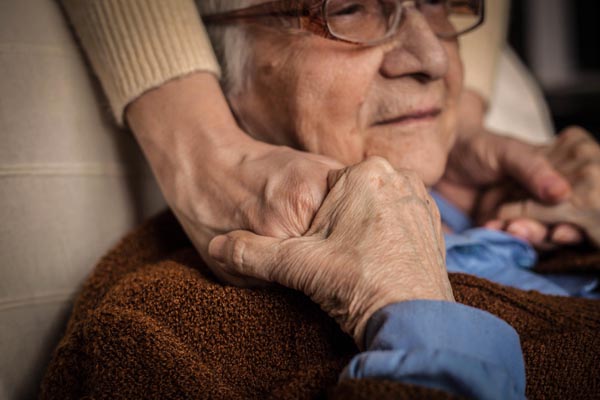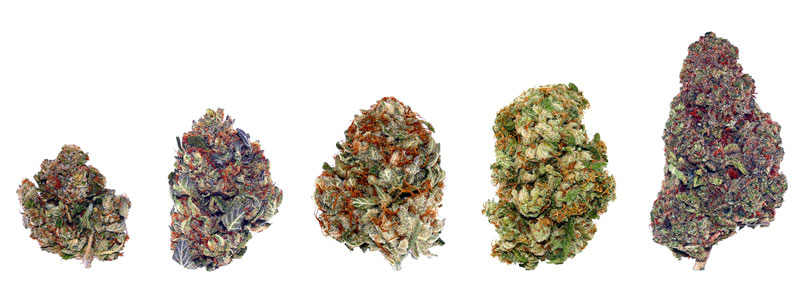Parkinson’s Disease
Imagine for a moment having to choose what part of your life you wish to enjoy today.
 Do you go to work, care for your children or grandchildren, or attend the anniversary dinner you have promised your spouse for the last few months? You only get to choose one because your medication will only allow you enough time to attend one event.
Do you go to work, care for your children or grandchildren, or attend the anniversary dinner you have promised your spouse for the last few months? You only get to choose one because your medication will only allow you enough time to attend one event.
Worse yet, imagine understanding what everyone around you is saying. They are talking about what kind of care you need, your children and grandchildren are arguing about who will take care of you or if you should go to a nursing home. While you understand every word, you are unable to say a word or communicate in any way.
These scenarios may sound like something straight from a terrifying movie but for many people with Parkinson’s disease these scenarios are all too real.
Modern medicine does not know exactly what causes Parkinson’s disease and sadly there is no cure available. Thankfully, current scientific research is underway to help us better understand Parkinson’s disease but current treatment options only help to manage the motor symptoms of the ailment and often only last for a very short time or they do not work at all. This has led many patients to seek out “alternative therapies,” including brain surgery, and in recent years medical cannabis.
Is medical marijuana the right choice for your symptoms of Parkinson’s disease or the symptoms of someone you care about?
For many people it depends on their own individual needs and what stage of Parkinson’s disease they are trying to combat. In this article, we are going to look at some of the symptoms of Parkinson’s disease and how medical cannabis affects those symptoms.
It is our goal to provide you with the information that you will need to make an educated decision on whether medical cannabis is an option for your individual needs or the needs of your loved ones. After reading this article, you should have a basic understanding about medical cannabis and Parkinson’s disease so that you can further discuss your options with your healthcare provider(s).
If you have any additional questions or concerns after reading this article, please leave them in the comments area below and a Kanteeva team member will respond back to you as soon as possible.
What Is Parkinson’s Disease?

The Parkinson’s Foundation defines Parkinson’s disease as:
a neurodegenerative disorder that affects predominantly dopamine-producing (“dopaminergic”) neurons in a specific area of the brain called substantia nigra.
While this definition explains what physically happens to people suffering from Parkinson’s disease, it does not explain what living with Parkinson’s disease is like.
Parkinson’s disease is a neurodegenerative disorder, which means that symptoms of the ailment will continue to progress and worsen over time.
Every individual who suffers from this ailment experiences different symptoms with varying levels of severity. Symptoms often come on gradually and get progressively worse; many patients only experience a few symptoms of the ailment while others have multiple severe symptoms throughout the entire disease process.
The symptoms of Parkinson’s disease are divided into two categories that include motor issues and nonmotor issues. Some of the symptoms that people with Parkinson’s disease may experience include:
- Motor issues
- Tremors
- Rigid muscles
- Slowness of Movement (bradykinesia)
- Falls and Dizziness
- Muscle Cramps and Uncontrolled Muscle Contractions (dystonia)
- Non-motor Issues
- Pain
- Loss of Smell
- Dementia
- Constipation
- Depression
- Anxiety
- Postural Blood Pressure Changes (orthostatic hypotension)
- Sleep Issues and Insomnia
- Urgency with Urination
- Chronic and Severe Fatigue
It is important to note that the symptoms listed above are the most common symptoms associated with Parkinson’s disease. Some people may experience different symptoms than are included on the list above and others might only experience some of the common symptoms listed above.
Parkinson’s disease is a neurodegenerative disorder that slowly progresses over time. This progression is broken down into 5 stages as the symptoms of this disease progress. If you would like to learn more about the various stages of Parkinson’s disease, you can find a very detailed breakdown at Parkinson’s News Today.
The important thing to remember about the 5 stages of Parkinson’s disease is that many people do not experience all 5 stages.
Another key thing to remember when dealing with the symptoms of Parkinson’s disease is that symptoms are caused by the brain being unable to produce dopamine. Dopamine is often referred to as the “feel good” chemical in the brain. As a result of this, many people dealing with the symptoms of Parkinson’s disease also have flat affect (severe reduction in the ability to express emotions), anxiety and depression at some point in time during the disease process.
While Parkinson’s disease does have both motor and nonmotor symptoms, most therapy options are geared toward treating the motor related symptoms of the ailment and often leave the non-motor issues out of the treatment options altogether.
How Is Parkinson’s Disease Currently Treated?
 There is no cure currently available for Parkinson’s disease. Treatment options are primarily focused on treating the motor issues associated with the ailment and often include a combination of medication therapy, physical therapy, exercise regimens and for some people suffering from speech problems during the later phases of Parkinson’s disease, speech-language therapy. For some people suffering from Parkinson’s disease surgery may be recommended to help treat the later phases of the ailment.
There is no cure currently available for Parkinson’s disease. Treatment options are primarily focused on treating the motor issues associated with the ailment and often include a combination of medication therapy, physical therapy, exercise regimens and for some people suffering from speech problems during the later phases of Parkinson’s disease, speech-language therapy. For some people suffering from Parkinson’s disease surgery may be recommended to help treat the later phases of the ailment.
People suffering from Parkinson’s disease have low concentrations of dopamine in the brain which means that dopamine cannot be produced, received directly or supplemented as it can not enter the brain properly.
The most common medication associated with the treatment of Parkinson’s disease is a combination of levodopa and carbidopa (Sinemet). Among Parkinson’s medications, this combination has the fewest short-term side effects but raises the chances for long term issues like involuntary movements, restlessness and confusion.
It is important to note that these potential side effects are also symptoms of later stages of Parkinson’s disease.
As a result of the long-term risk factors associated with levodopa and carbidopa, many healthcare providers prescribe dopamine agonists like Ropinirole (Requip), Pramipexole (Mirapex), and Rotigotine (Neupro) for mild Parkinson’s symptoms before moving on to Sinemet as they do not have as many long-term risk factors associated with them.
Unfortunately, many people suffering from Parkinson’s disease find that medications become less effective the longer they are taken. This means that many people find that they must increase their medication dosages because over time they find that their medications provide less relief over much shorter time frames.
While medications may work well for some patients, while for others they are completely ineffective.
The combination of side effects, ineffectiveness over time and financial stress often leads many people to try alternative options like medical cannabis to treat the symptoms of Parkinson’s disease.
Can Medical Cannabis Help Treat Parkinson’s Disease?

The shaking got so bad, I had to start taking a pill called Carbidopa/Levodopa. I could only take that so much because if I over medicate, I’ll have hallucinations. In order to relax more during the periods that I can’t take it, I medicate with marijuana. Pot gets rid of nausea; the throwing-up feeling. And I’m able to handle those medicines, too. I think it helps me. It gives me a better attitude. I don’t feel like a victim.
Cannabis has been used for a variety of different ailments for thousands of years all over the world. When it comes to Parkinson's disease there is documented medical evidence showing that it has been effective at treating the symptoms of the disorder as far back as 1899 when WR Gowers used a combination of cannabis and opium to treat patients suffering from the tremors associated with Parkinson’s disease.
He stated:
I have several times seen a very distinct improvement for a considerable time under their use.
In recent years, research has been conducted that shows that THC contained in cannabis can increase the amount of dopamine in the brain, as well as the ability for dopamine to be transmitted across the neural network of the brain. Since many of the symptoms of Parkinson’s disease are caused by a lack of dopamine in the brain, this scientific evidence shows promise that medical cannabis can in fact reduce many of the symptoms associated with Parkinson’s disease.
Another study published in 2014 followed 22 patients with Parkinson’s disease and showed that they had significant improvements on the Unified Parkinson Disease Rating Scale after consuming medical cannabis. Symptoms that were alleviated include tremors, rigidity and slowness of movement (bradykinesia). The patients involved in the study also reported significant improvements in overall sleep and pain relief.
The findings from these studies help to solidify what many patients in the medical cannabis community have claimed for years. Additionally, there are multiple patient testimonials available online from people suffering from Parkinson’s disease who have found relief from their symptoms through the use of medical cannabis.
While the testimonials that medical cannabis patients have shared with the public are merely anecdotal evidence, it is an effective demonstration of how medical cannabis can help to improve their overall quality of life.
One person who has shared his story in an interview on YouTube is David Esparza.
David Esparza’s Story
At the time of the interview, David had been suffering from Parkinson’s disease for 13 years. David stated that he really did not want to take medications and that his neurologist recommended trying marijuana in a tea form. He stated that after he tried medical cannabis in tea form, he was able to find relief from the tremors associated with his Parkinson’s disease. He went on to say that after his Parkinson’s had progressed he had to begin taking carbidopa levodopa, a common Parkinson’s medication.
David went on to share that his medication made him have hallucinations when he took too much and that it took him 5 years for his body to get used to taking the medications he had been prescribed. He stated that every morning he would wake up feeling nauseated and that he used cannabis therapy to help alleviate some of the side effects associated with his medications.
He also went on to share that he uses medical cannabis to help relax and relieve his symptoms during the time periods that he is unable to take his prescribed medications. As a result of cannabis therapy, David says that his quality of life has increased significantly.
At the end of the video, David sums up his opinion about using medical cannabis:
It helps me tremendously. It just gets me to a different attitude and the next thing you know, I find myself in the garden or I find myself, you know, making a treehouse for my son or playing with the dogs. So it really helps me have a good attitude about myself.
You can see the full interview with David in the video below.
The Important Information from Cannabis Studies and Community Members
 If you are considering trying cannabis to help treat the symptoms of Parkinson’s disease for yourself there are a couple of things that you need to consider before beginning therapy.
If you are considering trying cannabis to help treat the symptoms of Parkinson’s disease for yourself there are a couple of things that you need to consider before beginning therapy.
First, when it comes to Parkinson’s disease everyone experiences the symptoms in their own unique way. What may be a severe symptom for one person, may not affect someone else at all or affect them less severely.
We here at Kanteeva suggest that you take the time to discuss your treatment options with your healthcare provider(s), so you can increase the chances of success to find a strain that is best suited to alleviate your own unique symptoms.
Another important factor that you should consider before trying medical cannabis for the symptoms of Parkinson’s disease is that every individual will respond differently to cannabis. While some people find success using medical cannabis in general, others have to try multiple strains before they are able to find the right strain for their unique individual needs. Once again, this is another reason that it is very important that you discuss your treatment options with your healthcare provider(s) before trying medical cannabis on your own.
Please remember that strains of cannabis that work best for one person may not work as well for another.
What are the Best Marijuana Strains for Parkinson’s Disease?

Every individual person has their own unique needs when it comes to alleviating the symptoms of Parkinson’s disease with medical cannabis. There are some strains that are more popular than others among members of the medical cannabis community when it comes to treating the symptoms of Parkinson’s disease.
To get you started on finding the best cannabis strain(s) for your individual needs, we have selected a few of the most popular strains that are often credited for helping patients find relief from the symptoms of Parkinson’s disease.
What are the Top Strains for Parkinson’s Disease?
We base these strain recommendations on testimonials from medical cannabis community members, anecdotal research, scientific research and a variety of other factors like accessibility.
Death Bubba
This potent Indica Dominant Hybrid strain is highly sought after among the medical cannabis community. Among patients suffering from Parkinson’s disease, many report that this strain is their top choice for evening use as it alleviates tremors, pain and insomnia. Death Bubba is a popular choice for newcomers to medical cannabis as well, despite its very high THC content that averages around 26%. Be careful when starting to consume with this strain and dose slowly to avoid the side effects of THC overconsumption.
Chemdawg
This slightly Indica Dominant Hybrid is popular among cannabis community members for alleviating pain, muscle spasms, stress, depression and anxiety. Patients report that this strain delivers a full body relaxing effect, making it ideal for people suffering from Parkinson’s disease. It is recommended to start dosing this strain slowly because it has THC levels that average between 15% and 21%, with some samples even testing as high as 26%.
Amnesia Haze
For many community members suffering from Parkinson’s disease, this Sativa Dominant Hybrid is their top pick for daytime use as they report it delivers an energetic experience that helps with focus, pain relief and tremor relief without negative effects like couch lock and grogginess. It does have very high THC content that averages around 17% - 25%, so start dosing slowly and work your way up for optimal symptom relief.
Final Thoughts
Trying to cope with the symptoms of Parkinson’s disease can make you feel like your body is a prison from which you can’t escape. It can affect all aspects of your life and sadly for many people the treatment options that modern medicine offers are simply not effective enough to alleviate the day to day symptoms of Parkinson’s disease. Thankfully, thousands of people around the world have found relief from the symptoms of Parkinson’s disease by using medical cannabis.
If you are interested in starting a medical cannabis program for your Parkinson’s disease symptoms, we strongly suggest that you speak with your healthcare provider(s) and join the Kanteeva community for access to more helpful information from other patients and practitioners.
We Want to Hear from You
 Have you or a loved one found relief from the symptoms of Parkinson’s disease by using medical cannabis? If you have, we would love to hear from you!
Have you or a loved one found relief from the symptoms of Parkinson’s disease by using medical cannabis? If you have, we would love to hear from you!
Please help us spread the word about the amazing benefits that medical cannabis patients are finding all over the world by becoming part of our community.
With your help, thousands of others could finally find relief too.
Please share your stories, comments and questions below. If you are a medical cannabis patient please also mention what strain has been effective at helping you find relief from the symptoms of Parkinson’s disease.
Learn. Share. Connect.